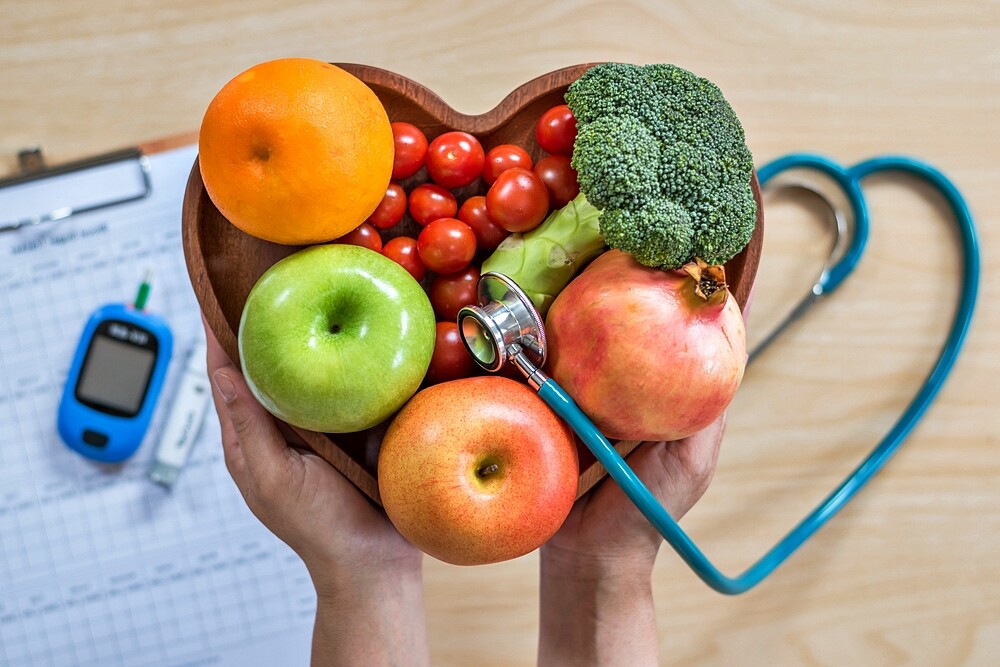Many rumours and myths are circulating in the USA about diabetes. Here you can find out what a diet for diabetes should look like.
4 important facts
- Healthy nutrition is important (fruit, vegetables, whole grain products, vegetable oils)
- Sugar is allowed, but should not account for more than 10 percent of calories
- Sufficient carbohydrates and fibre (at least 40 grams)
- Incorporate sufficient exercise into everyday life
Healthy food as the main factor
- Of course a healthy diet plays an important role for diabetics. But the widespread opinion that diabetics should only eat selected foods is not correct. Meanwhile there is also the food with the additive for diabetics suitably no more.
- This is because the diet and lifestyle of people with diabetes is ideally no different from the diet of people without treatment or therapy. There are therefore also no bans on certain foods. As is so often the case, what matters is a healthy relationship and also sufficient exercise.
- Particularly in the case of type 2 diabetes, the current goal is to improve long-term blood sugar levels and to reduce weight in overweight patients. However, crash diets are not being prescribed for this purpose, but rather a change to a balanced diet that can be implemented in the long term.
The right dosage of carbohydrates
- In type 2 diabetes, an intake of 45 to 60 percent of daily calories via carbohydrates is recommended. Fats, on the other hand, should be kept below 35 percent.
- This is mainly due to the fact that fats with 9 calories per gram are significantly higher in calories than carbohydrates or protein (4 calories). Fats should also be ingested mainly unsaturated in the form of vegetable foods such as olive oil. Animal fats in particular, such as meat or cheese, consist largely of saturated fatty acids, of which we consume more than enough anyway.
- People who inject insulin in therapy need the right amount of carbohydrates in order to adjust the insulin to them. This is done by calculating foods in carbohydrate units (KE) or bread units (BE) to correctly estimate the increase in blood sugar.
Fibre and complex carbohydrates
Carbohydrates should preferably be eaten in the form of complex carbohydrates, as these have less influence on blood sugar. Whole grain products (e.g. cereals) are a good choice. The glycemic index provides information on how strongly and quickly a food increases blood sugar levels. Therefore pay attention to a low value. Wholemeal products are also rich in fibre, which must first be processed in detail in the intestine for digestion and thus also protect the insulin level. Besides cereals, most fruits and vegetables are also rich in fibre.
Handling alcohol, sugar and salt
- Alcohol is dangerous for diabetic patients undergoing therapy (insulin), as hypoglycaemia can occur. Nevertheless, alcohol is not completely taboo. It is important that you always eat something when you drink alcohol. And of course you should only consume alcohol in moderation. The recommendation for women is a maximum of 10 grams of alcohol per day (men 20 grams). As a woman, this means that a quarter litre of beer or an eighth litre of wine is allowed.
- Many lemonades and juices contain a lot of sugar and calories and practically do not ensure satiety at all. Therefore, drink mainly water, tea or coffee.
- Sugar is not prohibited for people with diabetes. However, the same applies here: The amount makes the poison! The World Health Organization recommends that only five percent of calories are derived from sugar. More than 10 percent is not good for your health.
- Like sugar, salt is a flavour carrier that pushes up blood pressure. Get into the habit of enjoying the natural taste of food and use salt sparingly, if at all.

